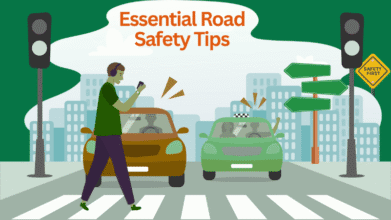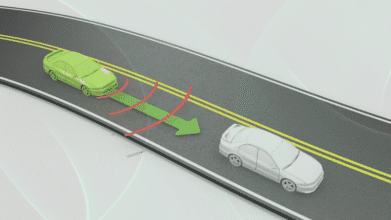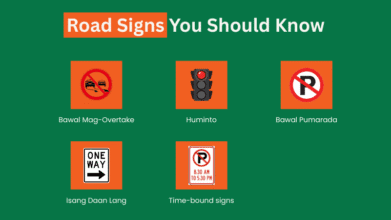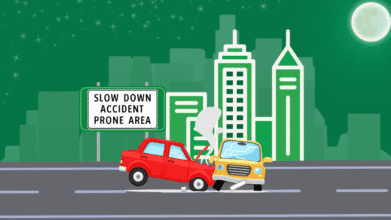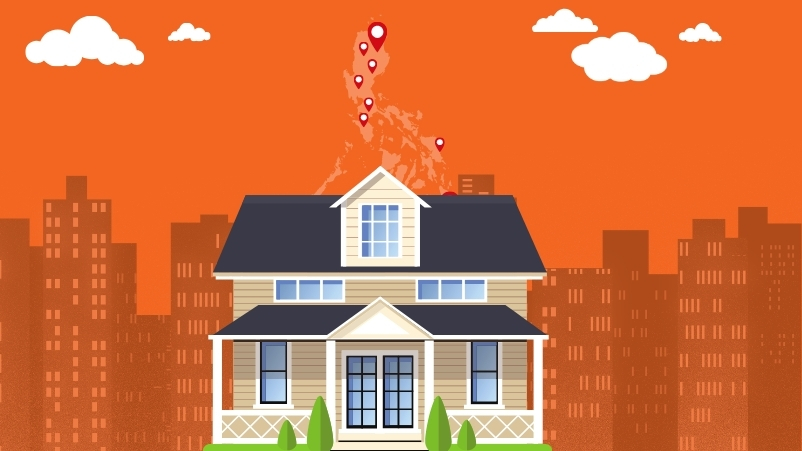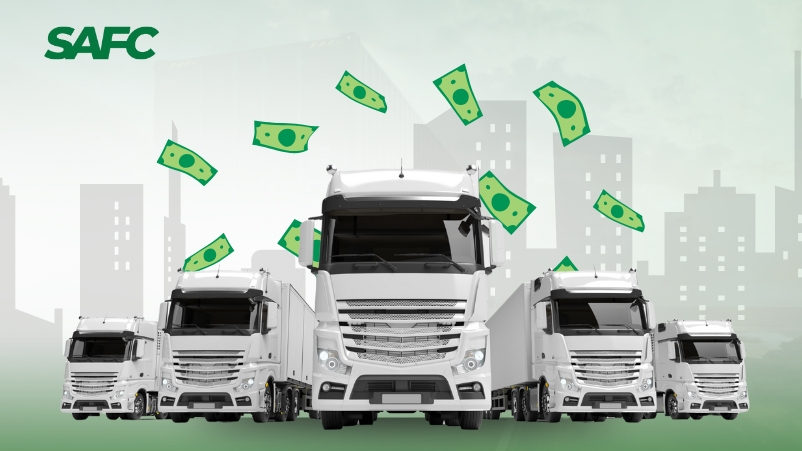Every day, 34 Filipinos die from driving habits can mean the difference between safety and disaster.
These aren’t your usual generic tips — this guide breaks down practical, localized road safety tips in the Philippines that address our real-life road conditions, culture, and common dangers.
If you’re serious about protecting yourself, your loved ones, and others on the road, stick around — these tips might just save a life.
The Reality of Road Safety in the Philippines
According to the Department of Transportation (DOTr) and MMDA, the Philippines records tens of thousands of road crashes every year — with an alarming average of 34 Filipinos dying daily due to traffic-related incidents. That’s a sobering reminder of how vulnerable we all are once we step out on the road.
The World Health Organization (WHO Philippines) has also flagged key issues that continue to plague our streets: overspeeding, distracted driving, drunk driving, jaywalking, failure to use helmets or seatbelts, and poorly maintained road signs and infrastructure. These aren’t just numbers — they reflect real pain and loss felt by countless families across the country.
Essential Road Safety Tips for Filipino Drivers
1. Always Wear Your Seatbelt — It’s the Law (RA 8750)
You’ve heard it a thousand times — but how often do you actually buckle up, especially in the back seat?
According to Republic Act 8750, all drivers and passengers — both front and back — are legally required to wear seatbelts while inside a moving vehicle. Many Filipinos mistakenly think the law only applies to the driver or front-seat passenger, but that’s false. Rear passengers are just as vulnerable during a crash.
Penalties: Failure to wear a seatbelt can result in fines ranging from ₱1,000 to ₱5,000, and repeat violations can lead to license suspension.
Local Reminder: In Metro Manila, MMDA enforcers frequently check for seatbelt violations during surprise operations. In provinces, LTO checkpoints are common especially during long weekends and holidays.
Tip: Make sure passengers, especially children, are safely buckled in at all times. Understanding the child car seat law in the Philippines can help you avoid penalties and protect young riders.
2. Follow Speed Limits — Especially on Highways & Barangay Roads
Speeding remains one of the leading causes of fatal road accidents in the country. One of the simplest yet most ignored road safety tips in the Philippines is this: know and follow the speed limits based on where you’re driving.
According to government guidelines:
- City roads: 30–50 km/h
- Barangay roads or crowded streets: 20–30 km/h
- Open highways: 60–100 km/h, depending on road type and signage
Don’t assume speed limits are the same everywhere. Roads in BGC and Quezon City have stricter limits than expressways like NLEX or SLEX. Be especially careful on barangay roads, where children or pedestrians may suddenly appear.
Enforcement Alert: The LTO (Land Transportation Office) and HPG (Highway Patrol Group) are actively conducting speed gun operations in both urban centers and rural highways. Getting caught overspeeding can lead to hefty fines and even license suspension.
Tip: Keep your speed in check, especially when passing through unfamiliar roads or small communities. Slowing down could save a life — maybe even your own.
3. Don’t Use Your Phone While Driving (RA 10913)
We’re all glued to our phones — but behind the wheel, even a few seconds of distraction can be deadly.
Under Republic Act 10913, also known as the Anti-Distracted Driving Act, it is illegal for drivers to use mobile devices while operating a vehicle — even when stopped at a red light. This includes texting, calling, browsing, or watching videos. Yes, even glancing at social media or replying “On the way (OTW)!” can get you fined.
Many Filipino drivers still think they can get away with using their phones “just for a bit,” but LTO and MMDA enforcers are trained to spot these violations, especially in high-traffic areas like EDSA, Ortigas, or major intersections in Cebu and Davao.
Penalties: Fines start at ₱5,000 for the first offense, and can go up to ₱20,000, with the possibility of a license revocation for repeated violations.
Tip: If you need to use navigation apps like Waze or Google Maps, mount your phone on a dashboard holder and set your destination before driving. Keep your hands on the wheel and eyes on the road — always.
This law isn’t just about penalties; it’s about preventing crashes and saving lives. Staying focused is one of the simplest yet most powerful road safety tips you can follow every day.
4. Keep a Safe Distance — Not Just Bumper to Bumper
Too many drivers in the Philippines treat traffic like a bumper-to-bumper game — but that kind of driving can quickly lead to collisions.
One of the most underrated road safety tips is to keep a proper following distance. The 3-second rule is simple: pick a marker (like a signpost or streetlight) and count “one-thousand-one, one-thousand-two, one-thousand-three” after the vehicle in front passes it. If you pass the same marker before finishing the count, you’re too close.
This gives you enough time to react if the vehicle in front suddenly brakes — especially important on wet roads or during heavy traffic surges.
Tip: In jeepney-heavy areas like Commonwealth Avenue, Quezon Avenue, or downtown Cebu, always leave extra space. Jeepneys often stop without warning, and tricycles or motorcycles may suddenly cut in — keeping a safe distance helps you avoid sudden braking or accidents.
Bonus: Keeping a safe distance reduces stress, improves fuel efficiency, and makes your driving smoother and safer.
5. Check Your Vehicle — Lights, Tires, Wipers, Brakes
Before hitting the road, every driver should practice “maintenance muna bago bumyahe.” It’s a simple but life-saving habit that often gets overlooked — until something goes wrong.
Regularly inspect your headlights, brake lights, turn signals, tire pressure, wipers, and brakes. A busted brake light or bald tire might seem minor, but in heavy traffic or bad weather, they could mean disaster.
This isn’t just a mechanic’s job — it’s your responsibility. These checks are especially important before long drives, road trips, or the rainy season.
🚨 Emergency Must-Haves in Your Vehicle:
- First aid kit
- Flashlight with extra batteries
- Basic tool kit and jumper cables
- Tire pressure gauge and spare tire
- Portable phone charger or power bank
- Emergency triangle reflector
Reminder: MMDA and LTO checkpoints sometimes flag vehicles for missing or faulty brake systems, lights, blinkers, warning devices, horns, or other safety equipment, especially during long weekends and holidays.
Tip about driving responsibly to protect your investment: Safe driving isn’t just about avoiding accidents — it also helps maintain your car’s value. Here’s how to use your car as collateral responsibly without putting your asset at risk.
6. Use Helmets and Protective Gear (For Motorcyclists)
For motorcycle riders, helmets aren’t optional — they’re the law and a lifesaver.
Under Republic Act 10054 or the Motorcycle Helmet Act of 2009, all motorcycle drivers and back riders are required to wear standard protective motorcycle helmets at all times, whether you’re cruising through EDSA or navigating a barangay road. The helmet must bear a PS or ICC mark to ensure it meets safety standards.
Checkpoint Hotspots: Expect LTO and PNP-HPG to strictly enforce helmet use in high-risk areas like:
- Commonwealth Avenue (QC)
- Marcos Highway
- National roads in Cavite, Laguna, and Bulacan
- Provincial highways leading to urban centers
Penalties for Non-Compliance:
Fines range from ₱1,500 up to ₱10,000, plus possible confiscation of your license for repeat violations.
Tip: Invest in full-face helmets and wear elbow and knee pads for added protection, especially during long rides or highway travel. Even short trips can be deadly without gear.
If you’re serious about road safety, this is non-negotiable. Helmets save lives — no matter how skilled you think you are on two wheels.
7. Stay Alert in Flood-Prone Areas
The rainy season in the Philippines can turn an ordinary drive into a dangerous one — fast. From España in Manila to Cainta, Rizal, many roads are notorious for sudden flooding that can stall vehicles, cause accidents, or worse, sweep you away.
Flood-related crashes are a growing concern, especially during typhoon season. That’s why staying alert and knowing your local flood-prone zones is a must for all Filipino drivers.
Flood-Prone Hotspots to Watch Out For:
- España Blvd., Manila
- C5–Kalayaan Avenue intersection
- Araneta Avenue underpass, Quezon City
- Cainta Junction, Rizal
- Malugay Street, Makati
- MacArthur Highway (Valenzuela section)
Tip: Before traveling, check flood advisories and real-time weather updates via NOAH’s official site to avoid getting stranded or caught in deep waters.
What to Do When Flooding Starts:
- Check news or Waze alerts before leaving during bad weather.
- Avoid driving through flood waters if unsure of the depth — even 6 inches can stall your car.
- Drive slowly and steadily if you must pass; keep to the center where water is often shallowest.
- Turn on hazard lights to stay visible.
- Don’t restart a stalled car in deep water — it may cause engine damage.
Tip: Pack an emergency kit that includes a flashlight, power bank, raincoat, food, water, and a whistle. These small items can make a big difference during unexpected floods.
8. Obey Road Signs — Yes, Even in the Provinces
It’s easy to ignore signs when traffic is light or you’re on familiar roads — but that’s exactly when accidents happen. Road signs aren’t just for decoration; they save lives.
Examples of Filipino Road Signs You Should Know:
- ⚠️ “Bawal Mag-Overtake” – No overtaking, especially on sharp curves.
- 🛑 “Huminto” – Stop sign in Tagalog, often seen in rural areas.
- 🚫 “Bawal Pumarada” – No parking zones that are strictly enforced in major cities.
- ⛔ “Isang Daan Lang” – One-way street; ignoring this leads to head-on collisions.
- 🕒 Time-bound signs like “No Left Turn from 6 AM to 10 AM” are common near schools or business districts.
Tech-Savvy Update:
The MMDA has started rolling out QR code-based signs in some Metro Manila areas. Scanning these gives you real-time info, such as detour routes or traffic advisories — a great use of tech for safety and awareness.
Driver Tip: When in doubt, slow down and read the sign — even if no one seems to be watching. Many provincial roads now have active LTO checkpoints, and enforcement is tightening even outside major cities.
Obeying road signs is a habit that shows discipline — and it’s a core part of driving safely anywhere in the country.
9. Drive Defensively — Expect the Unexpected
Between tricycles swerving out of nowhere, PUVs suddenly stopping without warning, and pedestrians jaywalking like it’s a sport, staying alert isn’t optional — it’s essential.
You’ve probably shouted, “Biglang liko naman si kuya!” at least once. Whether it’s a motorcycle cutting you off or a jeepney pulling over mid-lane to load passengers, unpredictable moves are part of daily traffic life here.
Road safety in the Philippines aren’t complete without reminding you to drive defensively — that means:
- Always anticipate errors — not just from you, but from other drivers.
- Keep your foot light on the gas in busy or tight roads.
- Use your horn as a warning tool, not out of anger.
- Check your mirrors often, especially for lane-splitting motorbikes.
Dealing with Common Situations:
- Tricycles: Give them space, especially in narrow barangay roads. They often don’t follow lane discipline.
- PUVs (Jeepneys & Buses): Expect unscheduled stops. Don’t tailgate.
- Jaywalkers: Slow down near markets, schools, or bus stops. Pedestrians often cross where there are no lanes.
Real Talk: In Philippine roads, it’s not about being the fastest — it’s about being the smartest. A defensive driver doesn’t just protect themselves, but also helps prevent accidents involving others.
10. Avoid Driving Under the Influence
You’ve heard it before, but it’s worth repeating: Never drive when you’re drunk or high. What might feel like “kaya pa ‘to” after a few drinks could end in tragedy — not just for you, but for others on the road.
Under RA 10586 or the Anti-Drunk and Drugged Driving Act, driving under the influence of alcohol or drugs is a criminal offense in the Philippines. Penalties can include:
If No One is Hurt:
- First offense: Fine of ₱20,000 to ₱80,000 + up to 3 months jail time
- Second offense: Fine of ₱80,000 to ₱200,000 + 3 to 6 months imprisonment
- Third and succeeding offenses: Fine of ₱200,000 to ₱500,000 + 6 months to 2 years in jail
If You Cause Physical Injuries or Death:
- With physical injury: Fine of ₱100,000 to ₱200,000, plus jail time under the Revised Penal Code
- With death involved: Fine of ₱300,000 to ₱500,000, plus much longer imprisonment
And if you try to skip the mandatory drug or alcohol test after failing a field sobriety check? Automatic revocation of your license. No excuses.
On-the-ground enforcement:
The LTO, PNP-HPG, and MMDA frequently run sobriety checkpoints, especially in nightlife-heavy areas like BGC, Tomas Morato, or Makati. Think you won’t get caught? Think again — many violators end up in the headlines after viral dashcam videos or tragic late-night collisions.
One of the most basic road safety tips is this:
“Kung iinom ka, huwag kang magmaneho. At kung magmamaneho ka, huwag kang iinom.”
Tip: Grab a ride home via Grab, Angkas, or a friend. Losing ₱500 for a ride is better than losing your license — or someone’s life.
11. Be Extra Careful at Night
Driving after dark isn’t just about switching on your headlights — it’s about switching on your full attention. Visibility is lower, reaction times are slower, and hazards? They double.
In many parts of the Philippines — especially in provinces and even some city outskirts — street lighting is poor or totally absent. Combine that with stray animals, broken-down vehicles with no hazard lights, and undisciplined drivers, and you’ve got a recipe for disaster.
Helpful nighttime road safety tips in the Philippines:
- Slow down and increase your following distance
- Use high beams when appropriate — but switch to low when there’s oncoming traffic
- Double-check intersections, even when the light’s green
- Watch for animals, especially in rural areas
- Stay alert for drunk or drowsy drivers
Local Reminder: National roads like those in Rizal, Cavite, or Pampanga can be pitch black after 7 PM. Even some parts of EDSA and C5 have dimly lit stretches — don’t assume you’re safe just because you’re in the city.
Tip: Before heading out at night, check that all your lights — headlights, brake lights, and signal lights — are working. It’s a simple step that helps you see and be seen.
12. Watch for Pedestrians and Bikers — Not Just Cars
Filipino roads aren’t just for four wheels — they’re shared spaces. Pedestrians and bikers are some of the most vulnerable people on the road, and yet they’re often overlooked in daily traffic.
According to Philippine law, pedestrians have the right of way at designated crossings, and bike lanes must remain clear for cyclists. But in real life? We all know how often these rules are ignored.
Real Talk:
You’ve probably seen motorcycles and cars swerving into bike lanes on EDSA or ignoring pedestrian signs near Ayala underpasses. It’s not just rude — it’s risky and illegal.
Common Issues:
- Motorists blocking or driving over bike lanes
- Pedestrians crossing outside pedestrian lanes
- No clear signage or barriers protecting bikers
- Lack of patience for slower, more vulnerable road users
Road Safety Tip in the Philippines:
Under the Land Transportation and Traffic Code and various LGU ordinances, failing to yield to pedestrians at a crosswalk or violating bike lane rules can lead to fines and traffic violations.
Quick Tips:
- Slow down near schools, malls, terminals, and churches
- Always check blind spots for bikers before turning or opening your door
- Give space — at least 1 meter — when overtaking cyclists
- Respect crosswalks, even if there’s no traffic enforcer watching
Reminder:
Areas like Ayala Avenue, EDSA, Ortigas, and Quezon Ave. are pushing for better pedestrian and bike infrastructure. But real safety starts with drivers choosing to care — not just when there’s a cop around, but always.
Bonus Tips: Road Safety for Commuters and Pedestrians
Let’s not forget — road safety isn’t just for drivers. Whether you’re commuting via MRT, hopping on a jeepney, or just crossing the street, your awareness can literally save your life.
- Be Alert When Crossing — Even on Green Light
In a perfect world, drivers would always stop on red and yield at pedestrian lanes. But in the Philippines, “green doesn’t always mean go.”- Look both ways, pause for a second, and make sure all vehicles have actually stopped before stepping forward.
- Avoid Using Phones or Headphones While Walking on Busy Roads
We get it — checking messages or vibing to music while walking is tempting. But distraction is dangerous.- Stay aware of your surroundings, especially near intersections, jeepney stops, or busy sidewalks. Your safety is more important than that reply or playlist.
- Safety Tips for Commuters Using Buses, MRT, and Jeepneys
-
- Don’t rush to board — wait for vehicles to come to a full stop before hopping on or off.
- Hold the railings inside buses and trains — sudden stops happen often.
- Avoid hanging on the edge of jeepneys. A slight swerve can send you tumbling.
- Keep bags close and zippers in front to avoid snatching — safety also means security.
Conclusion: Be the Change on the Road
Practicing safe driving isn’t just a personal responsibility — it’s a community effort. Whether you’re driving through EDSA traffic or cruising along a quiet barangay road, your actions matter.
Let’s do a quick recap of the top road safety tips in the Philippines that can make a real difference in 2025:
- Wear your seatbelt — front or back, always.
- Follow speed limits — whether you’re in the city or on the highway.
- Don’t text and drive — focus on the road.
- Maintain a safe distance — especially in jeepney-heavy zones.
- Check your vehicle regularly — “maintenance bago bumyahe.”
- Wear protective gear if you’re riding a motorcycle — it’s the law.
- Avoid flood-prone routes — know the hotspots.
- Follow all road signs — yes, even the ones in rural areas.
- Drive defensively — always expect “biglang liko si kuya.”
- Never drive under the influence — lives are at stake.
- Be extra cautious at night — watch for stray animals and stalled vehicles.
- Respect pedestrians and bikers — they deserve road space too.
Be a role model for road safety. Your good habits can influence others — your barkada, your coworkers, even strangers on the road. Imagine a Philippines where everyone takes safety seriously. It starts with us.
If you found these road safety tips helpful, please share this article with your family and friends. Let’s spread awareness, save lives, and make our roads safer — one driver at a time.


